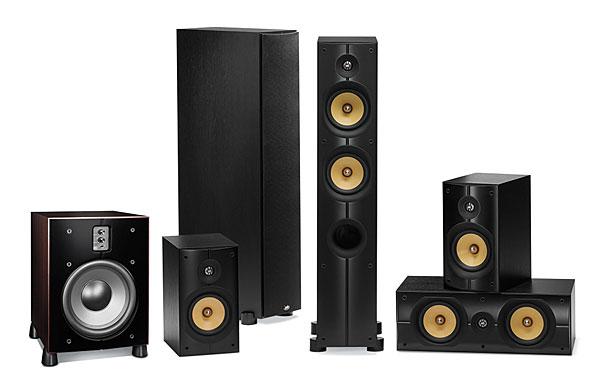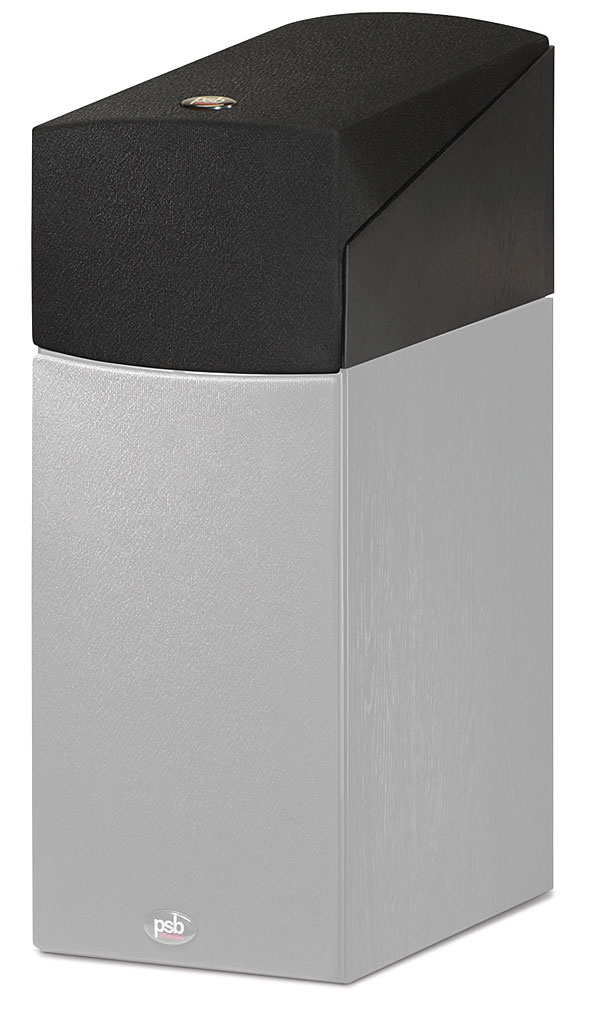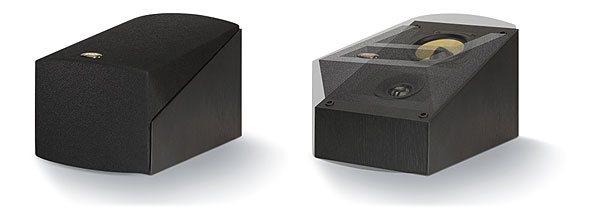PSB Imagine X Speaker System Review

AT A GLANCE
Plus
Brilliant octave-to-octave balance for musical playback
Exceptional center-channel timbral match
Effective and adaptable Atmos module design
Minus
Short towers may require tilt/angle manipulation
Limited subwoofer extension
A bit expensive relative to some recent debuts
THE VERDICT
Though it’s got some stiff competition at and even below its price, the Imagine X series trickles the magic of PSB’s near-perfect tonal balance down to a more attainable price while adding the option of object-based surround sound.
It’s a fact that good loudspeakers sound more alike than different. After all, they’re trying to accomplish the same task: reproduce the recording presented to their inputs with as little change, whether reduction or addition, as possible.
PSB speakers are good loudspeakers. Thus, thanks to the transitive property we all learned in middle school, one PSB model should sound very much like another PSB model, with allowances made for size, price, and range. It follows that PSB’s new mini-tower in their Imagine X series, the X1T, should sound like the full-sized and vastly more expensive Imagine T3 (Sound & Vision, September 2015, and soundandvision.com).
But I’m getting ahead of myself. The Canadian loudspeaker stalwart sent us a complete, Dolby Atmos–ready system: Along with a pair of X1Ts, it included an Imagine XC two-way center, a pair of Imagine XB bookshelf speakers for surround duties, a SubSeries 200 compact subwoofer, and two pair of PSB’s spankin’ new Imagine XA Atmos elevation modules. A trapezoidal two-way mini, the XA is cleverly shaped to serve as a ceiling-bounce Atmos-pheric sound source, whether in a top-of-speaker or wall-hung position.
 Family Affair
Family Affair
The X1T mini-tower looks clearly akin to the nine-times-the-price, reference-quality T3: same slim obelisk shape, similar inset drivers. But whereas the $7,498/pair T3 employs complex-curved and elaborately wood-veneered cabinets, the X1T gets by with square edges, black wood-grain vinyl, and presumably far less costly drivers and componentry. (It does, however, also sport a curved, anti-diffraction baffle—by far the most important reflection source—and smoothly contoured driver flanges to match.) Which is not to say that the X1T isn’t handsome in its own quiet and unassuming way, particularly with the grille removed.
Standing just 34.5 inches tall, the X1T is indeed a mini-tower. The XB bookshelves slated for surrounds are even more sawed-off; basically, each is a cut-down X1T, with a single 5.25-inch woofer instead of two. The XC center uses outwardly similar drivers as the X1T but in a far smaller box, with the resultant sacrifice in lower-bass performance (and it’s rearported, so no back-againstthe-wall placement), while the SubSeries 200 is a perfectly conventional 10-inch vented subwoofer.
The true debutante of the bunch is the XA elevation module for Dolby Atmos, a bias-sliced mini with a 4-inch woofer and a 1-inch tweeter. Unsurprisingly, given designer Paul Barton’s lifelong commitment to measurement as well as observation, PSB is the first maker I’ve encountered to fully spec their Atmos add-on: frequency response of 100 hertz to 23 kilohertz (±3 decibels) and a fairly low (anechoic) sensitivity of 85 dB.
Setting all this up required little more than routing an estuary of speaker cables and plugging them into amplification—in this case, a 7 x 120-watt, high-end Atmos A/V receiver offering 9.1-channel processing, plus two channels of my 150-watt multichannel power amp to fill out the 5.1.4 system. Easy enough, but with the rear XA modules on top, the XB surrounds clearly couldn’t be accommodated by my usual high shelves. I placed the XB/XA combos on fairly high stands arrayed at the Dolby-specified 100 degrees behind and astride the listening position, which brought the rear XAs to 50 inches in height. (The XA module exactly matches the XB’s outline in plan; the X1T is several inches deeper.)
Before I began my in-earnest listening, I spent a good deal of time with “match” noise, both circulating and stationary, which revealed some interesting points above the subwoofer’s operating range. First, the full PSB suite is impressively matched in tonality, with the overall noise “formant” changing very little from speaker to speaker through all nine positions. Second, the rear XA modules worked quite well: Their sonic origin was indisputably laterally “up,” though not at all sharply focused on a ceiling spot.

Third, the X1Ts are too short to yield similar results when used as stands for the front XA modules. (Interestingly PSB’s own literature states that the XAs may be used on top of any speaker, “as long as the XAs are sitting at least 36 inches off the floor,” which leaves the X1Ts 1.5 inches short.) With the XAs flat atop the mini-towers, their origins were only vaguely “up,” and much too far rearward. In other words, they seemed to be coming as much directly from the X1Ts themselves—this despite integral foam blocking on the inside of the XA’s grille to limit the off-axis sound from the up-firing tweeter—and what reflected sound the front XAs did contribute was difficult to distinguish in origin-point from that of the rear XAs.
Fourth, the X1T—as is the case with nearly every other mini-tower I’ve auditioned—is too short, period. At my seated ear height, a fairly low 35 inches or so, the high-frequency sweet spot remained a couple of inches below my ears. (To be fair, however, this was much better than some other mini-towers I’ve heard; I’m guessing Barton took some pains to tune the driver-crossover system for maximum in-phase-lobe elevation.)

My solution was simple. Tilting the X1Ts rearward a few degrees by adjusting their screw-in feet did the trick for the mini-towers. Tilting the XA pair atop them even further, by sliding thicker temporary stick-on rubber feet (from my inexhaustible supply pilfered from review samples over the years) under each module’s forward edge, yielded a sonic image that was more forward, much higher, and much more discrete. (I continued to fine-tune these adjustments as I listened, but this basic arrangement worked well throughout.)
A Fine Match
At this point, I reverted to two-channel stereo listening, full-range with no sub, and I quickly determined that the X1Ts are an astonishingly good under-$1,000 loudspeaker pair. Tonal balance was utterly neutral, and it matched that of my far more costly everyday speakers extremely closely. What difference there was could even be scored in the PSBs’ favor: The mini-towers had a whisper’s edge in warmth and roundness on male vocals, bassclef strings, and other such lowmidrange elements. This may or may not be more literally accurate, but it was a tiny (and euphonic) difference in any case.






























































